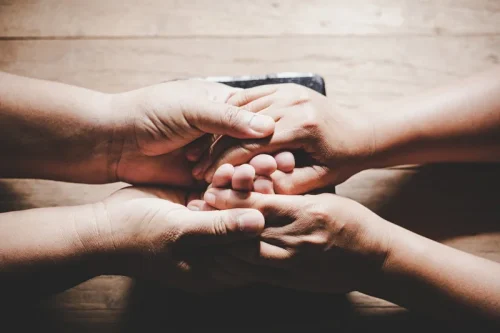
Level 1 houses provide almost no recovery-orientated structure (other than requiring residents to attend mutual support groups or the like), while Level 4 houses are considered “Therapeutic Communities” and share much in common with residential inpatient treatment. While there are fundamental differences between the levels (discussed below), their basic purpose is all the same – to provide what is a recovery residence a substance-free environment where people can continue their recovery while relying on support from their peers. Level III / Type S (Supervised) delivers weekly, structured programming including peer-based and other recovery support services (e.g. recovery and resiliency groups or person-driven recovery plans) and life skills development programming (e.g., job readiness or budgeting).
ARC Awards Nearly $11.5 Million to 39 Projects Supporting Appalachians in Recovery from Substance Use Disorder
All types of residences and occupancy numbers can be found at this level, depending on the program. Average stays vary from several weeks to several months, depending on the acuity of the individual. Emphasis is placed on equipping the individual for the next phase of recovery, be that another residential level, or independent living. This level is appropriate for the individual with some intrinsic motivation who would benefit from a nominal level of structure and support.

Building Quality Recovery Housing
Since then, Canada’s economy has evolved, and we must continue to adapt our immigration system to respond to new pressures, including a softening labour market. Canada has a long and proud history of https://ecosoberhouse.com/ welcoming newcomers from around the world who support our economy and enrich our country. The RRA Quality Standards are a comprehensive set of best practices recommended for recovery residences.
Best Practices for Recovery Housing
- The NARR Standard provides guidance for certifying recovery residences as effective and safe environments that support each individual’s recovery goals.
- Whitney Lehman’s career is distinguished by her leadership and advocacy within the recovery community.
- Chris is committed to improving the accessibility and quality of recovery residences nationally and has held leadership positions in co-founding NARR and serving as Past President of the Minnesota Association of Sober Homes.
- This overview results in a sprawling agenda that spans needs in recovery residence research, policy, and advocacy in the years to come.
They are alcohol and illicit substance-free recovery housing that utilize house rules and peer accountability to maintain safe and healthy living environments. Senior residents, appointed by the owner/operator to serve as the head of household, are typically called the House Manager. To serve higher needs/lower recovery capital populations, such as transition aged youth (e.g., youth years of age) with opioid use disorders, some Level II’s provide recovery support services and life skills development but at a lower intensity than Level III’s. National Alliance for Recovery Residences (NARR) is a leading nonprofit organization dedicated to expanding the availability of well-operated, ethical, and supportive recovery housing across the United States. Established to set and maintain high standards for recovery residences, NARR’s goals include ensuring that individuals in recovery have access to safe and recovery-focused living environments that support their journey towards long-term recovery. NARR is a national organization with a unique two-tier organizational structure that combines national reach and influence with state-level knowledge and accountability.
Through advocacy, education, and collaboration, RICARES fosters a culture of empowerment and resilience within the recovery community, ensuring that every individual has access to safe, supportive environments conducive to healing and growth. As the trusted national affiliate for recovery residences, RICARES champions the cause of recovery with compassion, integrity, and unwavering dedication. Recovery residences, sometimes known as sober living houses, have been shown to enhance a variety of recovery outcomes and are highly cost-effective, but little is known about which residence characteristics and practices are most important. The current study addressed this research gap by examining relationships between recovery residence characteristics (organizational, operational, programming) and residents’ recovery outcomes (substance use, criminal justice involvement, employment).

With professional connections between treatment programs and aftercare housing, patients can ensure they do not lose time transitioning between levels of care. They provide an increased level of structure and oversight and often utilize a clinical component of some kind, i.e. outpatient or aftercare services from a collaborative entity. This level offers life-skill-oriented programming in-house or in cooperation with other service providers. Guidance is provided for the development of life skills and recovery-sustaining activities, such as employment, physical health, and self-help.
Oxford Houses offer both recovery benefits and cost savings

It is important to recognize that these data do not speak to the causality of observed relationships. Nonetheless, this study provides an important foundation for future work to further investigate these characteristics and their role in recovery facilitation. All recovery homes are founded on social model recovery, but beyond that, they can differ in the type and intensity of services they provide and can differ in their staffing or governance. This diversity creates a spectrum of options that cost effectively matches individual’s evolving needs with a level of support.
- The delineation of a recovery residence continuum model offers an unprecedented degree of professionalism to a portion of the field of addiction recovery that has heretofore been laden with stigma.
- Weekly house meetings are a standard component, where chores and overall house functioning are processed within the community.
- However, most Level 1 RRs don’t provide onsite recovery services, with the possible exception of an optional 12-step recovery meeting held weekly at the home.
- Individuals participating in community-based Medication-Assisted-Treatment (MAT) are welcomed by RRA members and encouraged by the Recovery Residence Association to utilize our housing directory to find a home that best meets their housing needs.
- On average, facilities required 41 days of abstinence prior to intake and most operated on a 12-step based program.
- A series of studies on Oxford Houses suggest they promote a host of positive outcomes at substantially lower costs compared to standard continuing care after residential treatment.
- The resulting standard reflects the shared wisdom and strengths of the entire recovery residence community.
- Most Level 3 houses are overseen by paid staff, rather than self-governing like Level 1 and 2 homes.